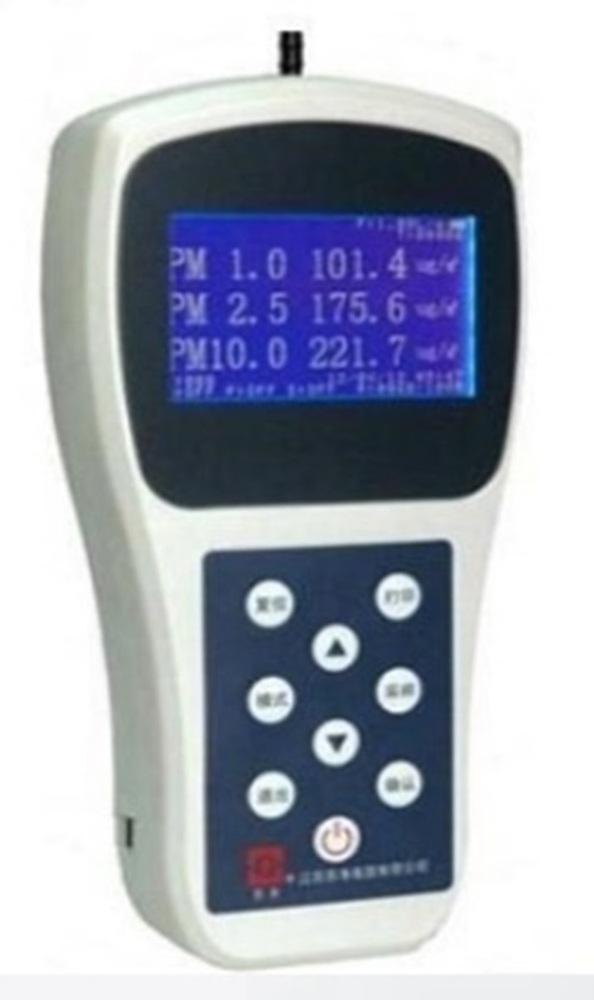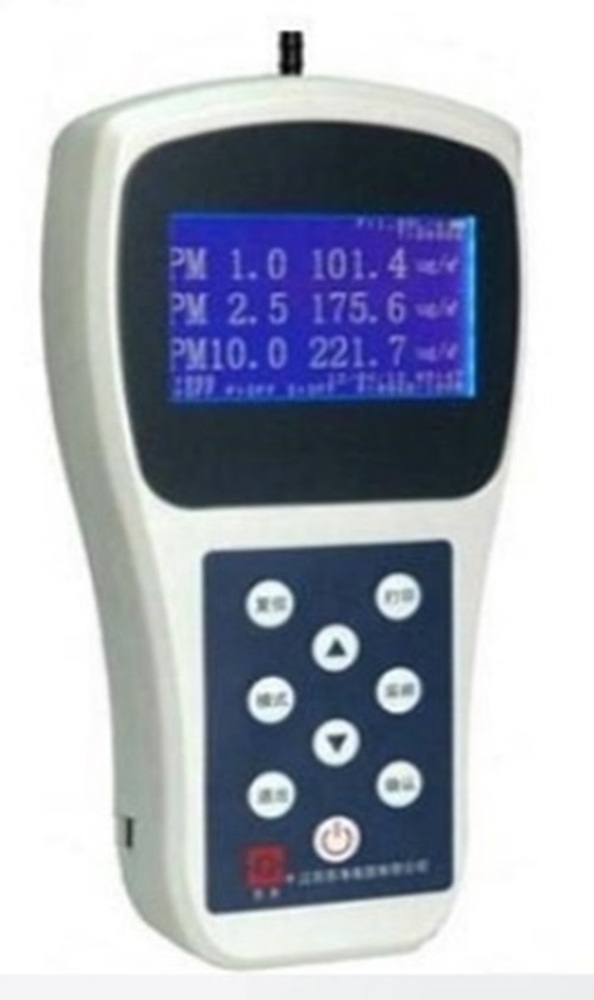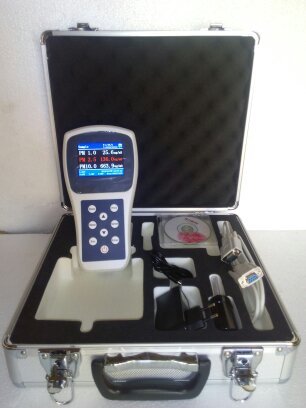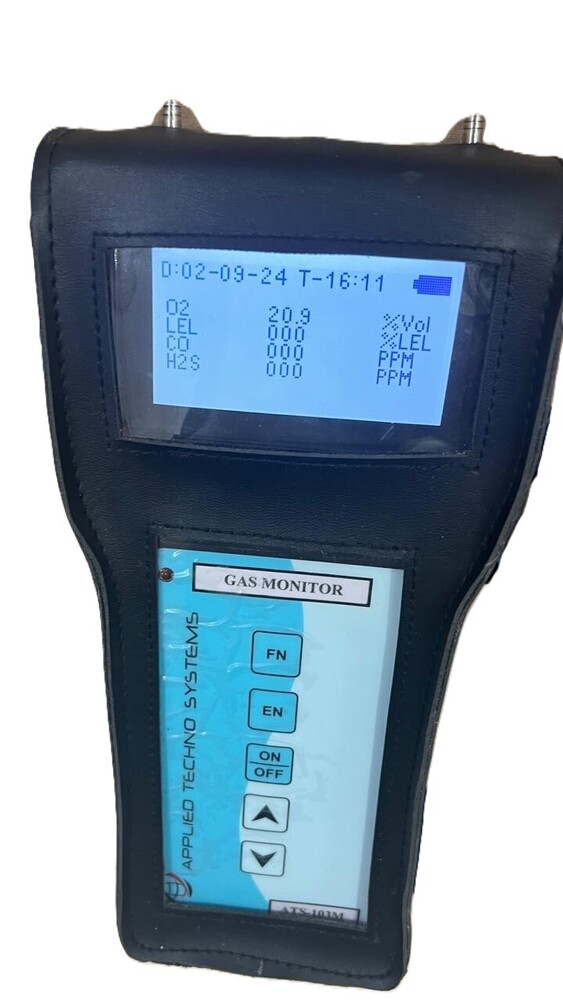- Dew Point Meters
- Gas Analysers
- Portable Gas Detector
- Moisture And Dew Point Analyzer
- Dust/Opacity Monitor
- Gas Monitoring Systems
- Gas Leak Detectors
- Gas Transmitters
- VOC Leak Detector
- Air Quality Monitoring System
- Online Continuous Emission Monitoring System-OCEMS
- Dew Point Monitors
- Gas Detector
- Opacity Monitor
- Portable Flue Gas Analyzer
- Online SOX & NOX Gas Analyzer
- Methane Gas Leak Detector
- Hydrogen Purity Analyzer
- Gas Purity Analyzer
- Effluent Monitoring Systems
- Producer Gas Analyzer
- Gas Detector Calibration Service
- Portable Gas Monitors
- Gas Sensor Transmitter
PM-10, PM-2.5 Air Monitoring System
Price 158000 INR/ Unit
PM-10, PM-2.5 Air Monitoring System Specification
- Power Source
- manual
- Usage & Applications
- Industrial
- Product Type
- Air Monitoring System
- Material
- Plastic
- Voltage
- 110-215 Volt (v)
- Warranty
- 1 year
- Surface
- Smooth
PM-10, PM-2.5 Air Monitoring System Trade Information
- Minimum Order Quantity
- 1 Unit
- Supply Ability
- 500 Units Per Month
- Delivery Time
- 7 Days
About PM-10, PM-2.5 Air Monitoring System
A portable or handheld particulate matter (PM) monitor is a device designed to measure the concentration of particulate matter (PM) in the air. PM refers to small solid or liquid particles, such as dust, dirt, soot, or smoke, that are suspended in the air. These particles are often categorized by their size, such as:
- PM10: Particles with diameters that are 10 micrometers and smaller.
- PM2.5: Fine particles with diameters that are 2.5 micrometers and smaller, which are more hazardous to health due to their ability to penetrate deep into the lungs.
- Portability: Compact design that allows users to carry it around for measurements in different locations.
- Real-Time Measurements: Most portable PM monitors provide real-time data, showing live air quality readings.
- Size Range: These devices can measure different PM sizes, like PM1, PM2.5, PM10, or even total PM concentration.
- Digital Display: Most models feature a digital screen that displays the air quality, often with additional information like temperature and humidity.
- Battery Powered: Most are rechargeable or powered by standard batteries for field use.
- Data Logging: Some devices can store measurements for later analysis, and advanced models allow for data export via USB or Bluetooth.
- Accuracy: Depending on the model, the accuracy may vary, but many portable monitors are calibrated to match scientific instruments.
- Connectivity: Certain devices offer Bluetooth or Wi-Fi capabilities to sync with apps or cloud platforms for data analysis.
- Environmental Monitoring: For assessing air quality in various locations like industrial areas, construction sites, and urban environments.
- Occupational Health: For workers in industries like mining, construction, or manufacturing, where particulate exposure can be a concern.
- Personal Use: For individuals concerned about their exposure to air pollution or living in areas with poor air quality.
- Research and Academia: For field research on air quality and pollution.
- Public Awareness: Used by community groups or environmental organizations to raise awareness about air quality in specific locations.
Precise Air Quality Assessment
This air monitoring system is specialized for detecting PM-10 and PM-2.5 particles, enabling industries to monitor environmental and workplace air quality effectively. The systems smooth plastic build ensures ease of maintenance and high durability, even in demanding environments.
Flexible Power Compatibility
Operating on a voltage range from 110 to 215 volts, this air monitoring system offers adaptability for various industrial setups. Its manual operation provides users with easy control while maintaining energy efficiency.
FAQs of PM-10, PM-2.5 Air Monitoring System:
Q: How does the PM-10, PM-2.5 Air Monitoring System work?
A: The system actively samples the ambient air, drawing in particles and measuring their concentration using precise sensors. It differentiates PM-10 and PM-2.5 particle sizes for detailed air quality analysis.Q: What are the main benefits of using this air monitoring system in industrial settings?
A: The device enables industries to maintain regulatory compliance, protect worker health, and quickly identify air quality issues, fostering a safer and healthier work environment.Q: When should the air monitoring system be operated or maintained?
A: Regular operation during manufacturing or processes that generate dust is recommended. Routine maintenance and calibration should be performed according to the user manual, typically every few months.Q: Where can this system be installed?
A: The system is suitable for installation in various industrial environments, such as production floors, warehouses, and outdoor factory vicinities where monitoring airborne particulates is crucial.Q: What is the process for operating the air monitoring system?
A: Begin by connecting the system to a compatible power source (110-215V). Follow the manual prompts to initiate air sampling, then record and analyze the data as instructed by the manufacturer.Q: How does the manual power source impact system usage?
A: The manual power source allows operators to control the start and stop of sampling sessions, ensuring only necessary monitoring is performed and conserving energy when the system is not in use.Q: Is there support or warranty for the air monitoring system?
A: Yes, the system comes with a one-year warranty, providing coverage against manufacturing defects. Users can also reach out for technical support or after-sales service as needed.

Price:
- 50
- 100
- 200
- 250
- 500
- 1000+
More Products in Air Quality Monitoring System Category
Stack Monitor
Price 275500 INR / Box
Minimum Order Quantity : 1 Box
Usage & Applications : Industrial
Warranty : 1 Year
Weight : 2.5 Kilograms (kg)
Handheld Air Quality Monitor with Data storage
Price 158000 INR / Unit
Minimum Order Quantity : 1 Unit
Usage & Applications : Monitoring
Warranty : One Year
Material : ABS Plastic
Weight : 250 Grams (g)
Air Quality Monitor
Price 145500.00 INR / Piece
Minimum Order Quantity : 1 Piece
Usage & Applications : Industrial
Warranty : 1 Year
Material : PVC Plastic
Weight : 0.6 Kilograms (kg)
Air Pollution Gas Monitors
Price 78500 INR / Unit
Minimum Order Quantity : 1 Unit
Usage & Applications : For Industrial Use
Warranty : One Year
Material : ABS Plastic

 Send Inquiry
Send Inquiry





 English
English Spanish
Spanish French
French German
German Italian
Italian Chinese (Simplified)
Chinese (Simplified) Japanese
Japanese Korean
Korean Arabic
Arabic Portuguese
Portuguese